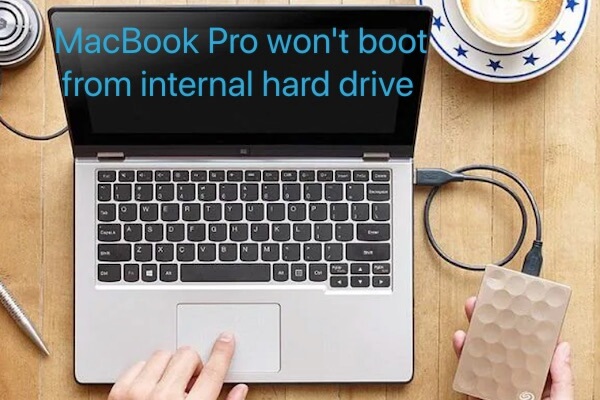
- #Ssd boot drive mac osx how to#
- #Ssd boot drive mac osx install#
- #Ssd boot drive mac osx upgrade#
- #Ssd boot drive mac osx full#
- #Ssd boot drive mac osx password#
#Ssd boot drive mac osx full#
However, I went from a 500Gb, 7200rpm drive with no encryption to the 512Gb SSD with full disk encryption and its still hugely faster (sub 7 second boot time and instant resume from sleep). My user data is about 300Gb or so with the bulk being music and movies. The reason I ask is that I have the same MBP and specs you have, but I also have a 512Gb Crucial M4 SSD. So let me see if I understand the intent here… your desire is to have your OS separate from your user data (similar to how Linux and most UNIX's have a separate /home partition) and you wanted the user data encrypted for security, but you didn't want to encrypt the OS drive as you thought it would slow it down? And, I'm assuming that the 120GB SSD wasn't sufficient enough space for your OS *and* user data combined? The command for that, using the example of my Data HD above, is: He also advised setting up another Admin account on the SSD in case one ever needed to do an decrypt the Data HD in case anything goes wrong.

Also the script will be installed at /Library/LaunchDaemons/. % Total % Received % Xferd Average Speed Time Time Time Current Dload Upload Total Spent Left Speed100 509 100 509 0 0 314 0 0:00:01 0:00:01 -:-:- 385 % Total % Received % Xferd Average Speed Time Time Time Current Dload Upload Total Spent Left Speed100 139 100 139 0 0 80 0 0:00:01 0:00:01 -:-:- 99100 2790 0 0 7686 0 0:00:03 0:00:03 -:-:- 76438-Installing.Do you want to unlock Data HD at boot? (y/N)yWhat is the passphrase used to encrypt Data?*Enter passphrase for Data HD* Following conversations with Justin, it is probably worth checking that you have an entry for Unlock: Data HD in the System Keychain. % Total % Received % Xferd Average Speed Time Time Time Current Dload Upload Total Spent Left Speed100 28 0 0 1486 0 0:00:01 0:00:01 -:-:- 1864Password:-Downloading. Vinces-MacBook-Pro:~ vince$ curl | bash % Total % Received % Xferd Average Speed Time Time Time Current Dload Upload Total Spent Left Speed100 28 0 0 1277 0 0:00:02 0:00:02 -:-:- 1971Attempting to re-run as root. Start by running the diskutil list command, which returns a list of all your disks, like this: You encrypt disks with the diskutil command, but first, you have to convert them to a format called CoreStorage. I tried this method and it didn’t appear to work properly so I used the Terminal approach.
#Ssd boot drive mac osx password#
You’ll have to enter the password a second time, and you won’t be able to go any further unless you also enter a password hint. Choose Encrypt "disk name" and enter a password. I then used Migration Assistant to pull over all my Apps to the SSD boot drive.Ĭontrol-click on a disk in the Finder to encrypt to encrypt it (in a Finder window, the Finder sidebar, or on the Desktop).

That all worked fine, and when I rebooted and logged in to my account, all my Users are on the Data HD. Obviously, for all permissions to work correctly you need to keep the new user names and passwords the same as the old ones. In the Users & Groups preference pane, I right-clicked on my account name and selected Advanced Options, and set the location of my user account to be my old user account on the secondary drive now named Data HD. I then set up my main user account with the same name and password as before.
#Ssd boot drive mac osx install#
I left my old system in place on the old drive and did a clean install of Mountain Lion 10.8.2 on the SSD.
#Ssd boot drive mac osx how to#
Here’s how to use your X8 or X6 external SSD as a boot drive for Mac computers.Recently I became so sick of the slowness of my MacBook Pro (late 2011 model), which has a 2.4 GHz Intel Core i5 with 16 GB RAM running Mountain Lion 10.8.2, that I decided to buy a 120 GB Kingston SVP 200 SSD drive for my boot drive and put my previous 500 GB Hitachi HD in place of the DVD drive. Note: Just in case you accidentally delete some files or select the wrong drive, Crucial recommends backing up your files in a secondary location before setting up your Crucial X8 or X6 as a boot drive.
#Ssd boot drive mac osx upgrade#
It’s that easy.Īfter learning how to install your external SSD, you’ll find that using a Crucial portable SSD as a boot drive is a simple and reliable way to upgrade your system without using a screwdriver. External SSDs, including the Crucial X8 and X6, offer a way to increase speed and capacity without replacing internal parts. Older iMacs or Mac Mini systems likely came with a hard disk drive - which are much slower than SSDs - or a low-capacity SSD. Yes, you can boot from an external SSD on a PC or Mac computer.ĭepending on the model, Macs in particular can be difficult to upgrade.

If you’re considering upgrading to a Crucial X8 or Crucial X6 portable SSD, you may wonder, “Can I use an external SSD as a boot drive?” We have good news.


 0 kommentar(er)
0 kommentar(er)
